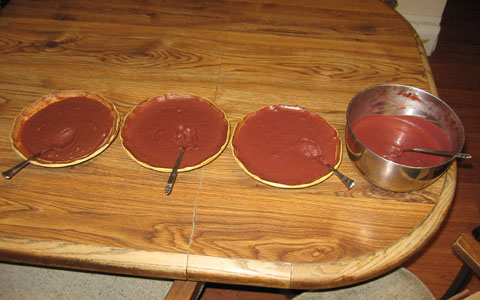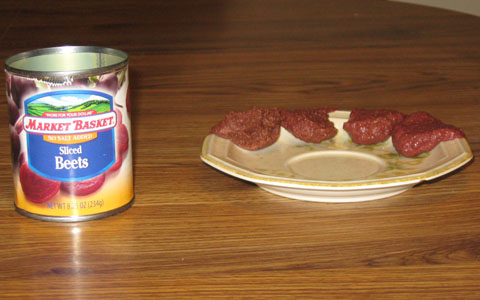|
|
 |
Red Velvet Preliminary Research Project:
Prepare four batches—"samples"—of crust:
4 oz. semi-sweet chocolate, melted
1 1/3 tablespoons cocoa powder
1 cup (8 oz.) lowfat cottage cheese, whipped, no salt added
3/8 cup sugar
1 teaspoon vanilla
1 teaspoon lemon juice
2.2 oz. Bran Buds, ground up
Prepare beet puree (such as in a blender) by using a can or cans of no-salt-added
red beets (such as sliced). Use the entire contents, including the water.
To each of the above samples, add this puree, as follows:
Sample 1: 1/4 cup
Sample 2: 1/2 cup
Sample 3: 3/4 cup
Sample 4: 1 cup
Recommended: Add this puree, before the Bran Buds, into each of these
batches.
Bake at 350 degrees for the approximate durations as follows:
Sample 1: 20 minutes.
Sample 2: 25 minutes.
Sample 3: 30 minutes.
Sample 4: 35 minutes.


(Crust mixtures shown left-to-right in ascending order, i.e., from Sample
1 to Sample 4)
|
|

|


